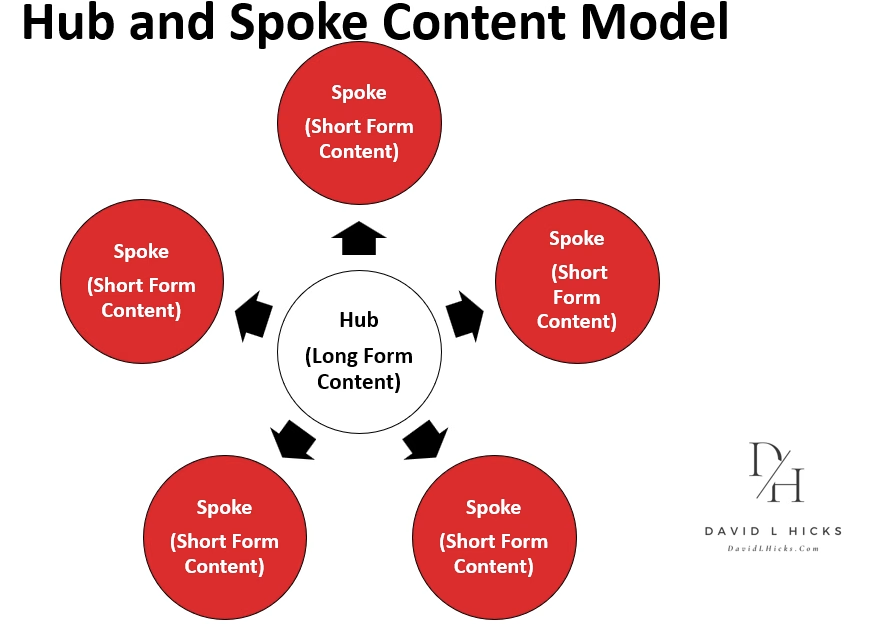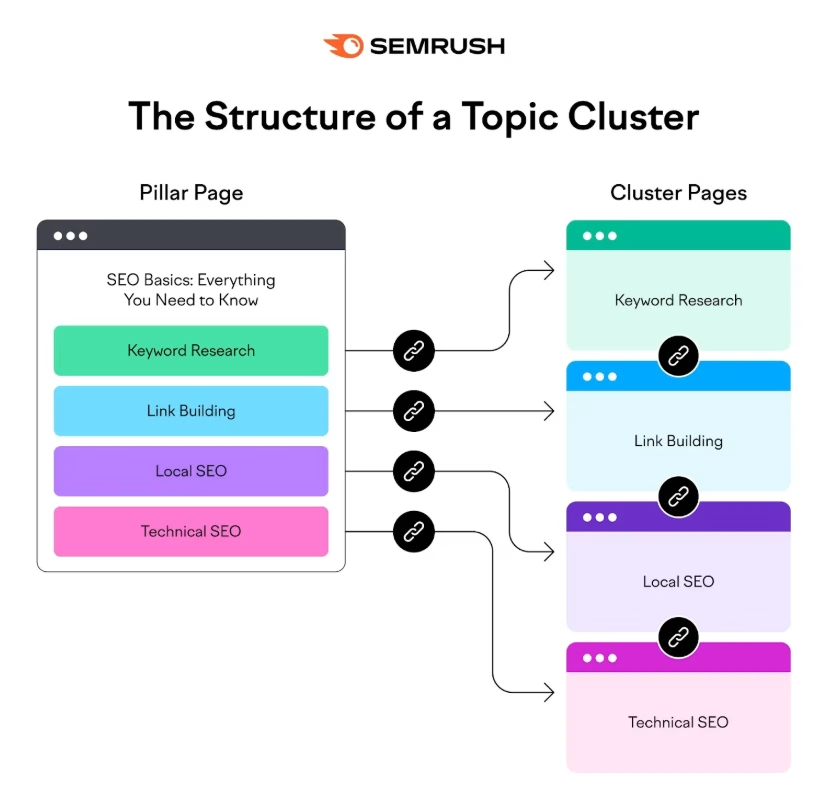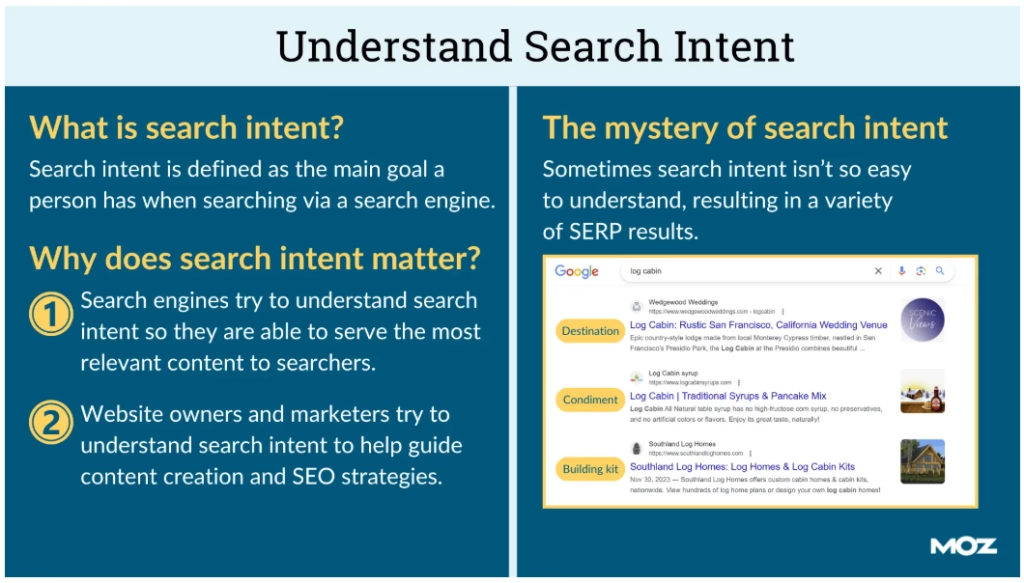Exploring Types of Content Strategy for Marketing Success
Written by David L Hicks – October 7th, 2025
You feel like you are creating tons of content, but nothing seems to stick. You are publishing blog posts and social media updates, but the traffic needle just is not moving. That is because creating content is not the same as having a content strategy. Understanding the different types of content strategy can significantly impact your results.
It helps you build a real plan instead of just throwing things at the wall to see what works. A well-defined approach turns random acts of content creation into a focused machine for growth. Picking one of these types of content strategy is your first step to getting real traction.
Table of Contents
ToggleWhy You Need a Content Strategy
You have probably heard that content is king. That phrase has been around for a long time, but it is not the whole story. An unplanned marketing strategy results in content that is merely noise. A real plan gives your work a purpose and connects every piece back to your marketing goals.
Perhaps your goal is to acquire more email subscribers or boost sales of a particular product. An effective content marketing strategy ensures that every social media post or video helps you achieve your goals. It forces you to understand your target audience, their pain points, and their position in the customer journey.
Without a plan, you are just making content for the sake of it. A clear strategy guides your content team, aligns your marketing efforts, and gives you a framework for measuring success. Having a plan with total alignment helps you move from simply producing media content to achieving tangible business results.
The Main Types of Content Strategy
Let’s break down the common approaches you can take. You might find that one fits your business perfectly. You may also find that a combination (hybrid approach) of different content strategies can work even better for you.
The Hub and Spoke Model

Imagine a wheel with a hub in the center and spokes sticking out from it. That is the core idea of this strategy. Your hub is a comprehensive, in-depth piece of long-form content that covers a broad topic in great detail, similar to a definitive guide or a resource page.
Your spokes are smaller pieces of content, such as blog posts or social media content, that cover specific subtopics related to the hub. These smaller pieces all link back to your main hub page, funneling traffic and authority to that central asset. This structure helps position you as a thought leader on the topic.
This model is powerful for a couple of reasons. It organizes your content logically, enabling your audience to easily find comprehensive information. It also signals to search engines that your hub page is an authority, which can significantly boost its ranking for competitive keywords.
The Pillar Page and Topic Cluster Model

(Source – Semrush)
This model resembles the hub and spoke approach, and they are quite similar. Many content marketers use the terms interchangeably. A pillar page is similar to a hub page; it covers a main topic in depth and serves as the central point of your cluster.
Topic clusters are your spoke content, which can include blog posts or articles that explore related keywords in greater detail.
The primary difference often lies in the planning phase. The topic cluster model puts a heavy focus on keyword research from the start, so you plan the pillar and all its cluster pages together. It is a very deliberate approach to build credibility and dominate search rankings for a specific area of interest.
The Digital Asset Builder Strategy
This strategy focuses on creating high-value content that endures. You are not just writing a media post with a short shelf life; you are building evergreen assets for your company. Think of things like free tools, comprehensive ebooks, original research reports, or a detailed white paper.
These are major projects that require a significant investment of time and resources. However, this form of content can pay off for years to come. For example, a marketing software company might create a free website analysis tool that generates leads and builds brand loyalty long after its launch.
Another example is publishing a white paper with unique industry insights based on your own research. Other people will link to and cite your data, earning you valuable backlinks and establishing you as an authority in your field. The assets you create can become a core part of your marketing engine, continuously working for you.
The Content Funnel Strategy

You have likely heard of a sales or marketing funnel, this is the content funnel version of that concept. It guides potential customers from initial awareness to making a purchase. The content funnel consists of three stages, each requiring different content types.
- Top of Funnel (TOFU) – The top of the funnel, also known as the awareness stage. The TOFU is for people who do not know you yet. The goal is to raise awareness, so the content you create here should address a problem or answer a question. TOFU can include blog posts, infographics, short-form video, and other visual content.
- Middle of Funnel (MOFU) – This stage is referred to as the consideration or evaluation stage. People here know who you are and are considering their options. This content is designed for lead generation and may include case studies, webinars, and free guides that require an email address for access. The MOFU focuses on nurturing a potential customer.
- Bottom of Funnel (BOFU) – The last stage of this funnel is the decision or conversion stage. These individuals are prepared to make informed business decisions. The content here helps them make a final choice and focuses on driving conversions. It includes features such as product demos, free trials, and customer testimonials.
This successful content marketing strategy is effective because it meets people where they are in the customer journey. It provides them with the right information at the right time. This approach builds trust and gently moves them toward becoming a customer.
The Brand Awareness Strategy
Sometimes the goal is not direct sales or leads. Sometimes you just want more people to know your brand’s name and what it stands for. That is where a brand awareness strategy comes in, focusing on making your content stand out from the crowd.
The content here often focuses on storytelling and connecting with the audience on an emotional level. You share your company’s values, mission, and the people behind the brand. An example could include video content showcasing your company culture or a blog series that highlights customer success stories without a hard sales pitch.
It is less about a direct sale and more about building a community and fostering customer engagement. Guest posting on other popular sites is another effective tactic to put your brand in front of a new, targeted audience. The goal is to become memorable and trusted, creating thought leadership content that resonates deeply.
The SEO Focused Content Strategy
This one is all about getting organic traffic from search engines. Every piece of media content is created with a specific keyword in mind. The primary goal is to rank on the first page of Google, which can deliver a steady stream of qualified traffic.
This strategy requires a deep understanding of keyword research to know what potential customers are searching for and the intent behind those searches. Your content must be the best answer available for that query, meaning it must be comprehensive, well-structured, and provide genuine value.
As the experts at Moz often emphasize, satisfying user intent is crucial for achieving SEO success. SEO matters because:
- It allows search engines to try to understand search intent to better help people find relevant information
- Helps organizations understand search intent to help guide the content development and SEO strategy
Being successful with SEO requires focusing on technical aspects, such as page speed, mobile friendliness, and proper header usage. Although a lot of SEO is considered a technical approach, it is essential for any successful content marketing plan looking for long-term growth.

(Source – Moz)
Content Strategy Variants
A content strategy is a highly versatile tool that a content marketer and their team can utilize. You don’t need just one content strategy that covers everything, depending on how robust your content library is in terms of your industry, distribution channels, and type of content.
Small Business Content Strategy
A content strategy for small businesses is a detailed plan that aligns your content development efforts with your organization’s business objectives. One of the primary focus points of the strategy is to maximize your content with limited resources.
B2B Content Strategy
A B2B content strategy is a marketing approach that focuses on the ideation, development, and distribution of content geared to organizations that sell products and services to other organizations.
UX Content Strategy
A UX content strategy focuses specifically on the user experience (UX). Your UX content strategy ensures the following:
- Alignment to user needs
- Boosts conversions
- Alignment to business goals
- Helps eliminate gaps between the user needs and business goals.
- Increase in user engagement
Your content strategy must also offer consistency in tone and style. If you’re able to do that, it will foster brand recognition and build trust with your audience.
Product Content Strategy
Product content typically takes the form of a document that explains what the product is and its benefits to the owner. The product content can come in many forms, including the following:
- Written text
- eBook
- Video demonstration
Brand Content Strategy
A brand content strategy is your high-level plan for utilizing content to establish and grow your brand’s reputation and audience. Your brand content strategy is the bigger picture that gives direction to those smaller content plans. It makes sure every piece of content, from social posts to long-form content, works together cohesively.
As previously stated, a content strategy applies to any content-related activity. This list doesn’t even scratch the surface of the various content strategy variations that exist. Other variations include the following:
- Content Strategy for LinkedIn
- Vlog Content Strategy
- Content Channel Strategy
- Enterprise Content Strategy
- SEO Content Strategy
How to Choose the Right Content Strategy for You
Seeing all these options may be overwhelming. How do you pick the right one? The best strategy depends on your specific situation and current business goals.
Are you a new company that needs to build authority quickly? The pillar page and topic cluster model might be perfect for you. Are you an established brand seeking to foster a stronger connection with your audience? A brand awareness strategy, along with its associated creative content, could be the answer. Here is a simple way to consider how these content strategies align with common marketing objectives. The table below can help guide your business decisions.
| Business Goal | Primary Strategy to Consider |
|---|---|
| Generate Organic Traffic & Authority | Pillar Page / Topic Cluster |
| Nurture Leads to Sales | Content Funnel |
| Build a Strong Reputation & Backlinks | Digital Asset Builder |
| Improve Search Rankings for Specific Terms | SEO Focused Content Strategy |
| Increase Name Recognition | Brand Awareness |
| Organize Existing Content Effectively | Hub and Spoke Model |
You do not have to stick to just one. Many successful companies use a hybrid approach. You might start with an SEO-focused strategy to build a foundation of traffic and then add a content funnel to turn that traffic into leads through targeted email campaigns.
Your strategy can grow and change with your business. The important thing is to have a plan and be intentional with your efforts. Having a plan and being intentional ensures every piece of content, from a social media post to a white paper, contributes to your success.
Your Content Can Work Harder for You
Stop creating content without a clear direction. Your time and resources are too valuable for that. Having a plan makes all the difference in the world.
It turns your content from a random collection of articles into a powerful marketing machine that delivers real marketing benefits. A good plan attracts the right audience, builds trust, and helps you achieve your business goals. A content calendar can keep you organized and consistent across multiple platforms.
The path forward starts with a decision. Which strategy makes the most sense for you right now? Pick one and commit to it, then start planning your next move. Take that first step toward making your content work for you, not the other way around.
Conclusion
Now you’re equipped with the knowledge to make a genuine impact on your content marketing. Do not let your efforts go to waste any longer. Picking from these different types of content strategy gives your work purpose and direction.
Having a purpose and direction ensures that every piece you create contributes to your larger business goals. A focused strategy is the foundation of any successful content plan, turning your ideas into results.
Moving forward with one of these content strategies is the best way to achieve real growth. It allows you to create effective content that resonates with your audience and drives your business forward.